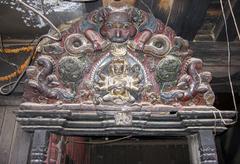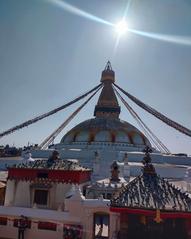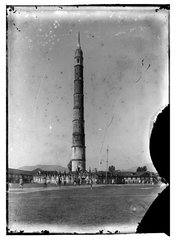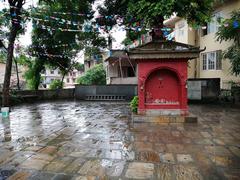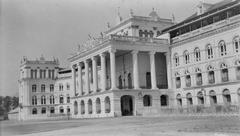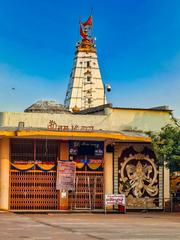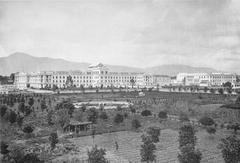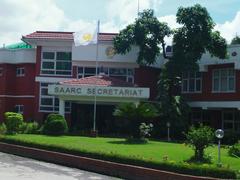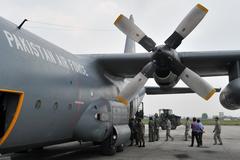Dasarath Rangasala Stadium Kathmandu: Visiting Hours, Tickets, and Comprehensive Guide
Date: 14/06/2025
Introduction
Dasarath Rangasala Stadium, located in the bustling heart of Kathmandu, stands as Nepal’s largest and most historic multi-purpose sporting venue. Established in the mid-20th century during King Mahendra’s reign, the stadium has evolved into a symbol of national unity, sportsmanship, and cultural pride. Not only does it host major football matches and athletic events, but it also serves as a vibrant gathering space for national celebrations, concerts, and community festivals. Its central Tripureshwor location provides easy access to Kathmandu’s renowned historical sites, making it a must-visit for sports fans, history enthusiasts, and cultural explorers alike (EverybodyWiki; GoalNepal; Trek Zone).
This article provides an in-depth guide to Dasarath Rangasala Stadium, including its origins, architecture, notable events, visiting hours, ticketing information, accessibility, amenities, and nearby attractions. Whether attending an electrifying football match, exploring its architectural legacy, or simply soaking up local culture, visitors will find all essential information for a safe and memorable experience.
Table of Contents
- Origins and Historical Development
- Architectural Highlights and Facilities
- Renovations and Resilience
- Sporting and Cultural Significance
- Notable Events and Tragedies
- Visiting Hours and Ticketing
- Accessibility and Visitor Services
- Event Atmosphere and Local Culture
- Safety Tips
- Nearby Attractions and Travel Tips
- Frequently Asked Questions (FAQ)
- Useful Resources & Further Reading
- Conclusion
Origins and Historical Development
Dasarath Rangasala Stadium, also known as Kathmandu Stadium (Nepali: काठमाडौँ रंगशाला), was commissioned in the mid-1950s as part of Nepal’s modernization and growing engagement with international sports. Named after Dasharath Chand, a revered martyr of Nepal’s democracy movement, the stadium was inaugurated in 1958 with an initial capacity of 30,000 spectators (EverybodyWiki). Its creation marked a significant milestone in the country’s sporting infrastructure, serving as a hub for football, athletics, and national ceremonies.
Architectural Highlights and Facilities
The stadium’s architecture reflects a blend of modernist construction and traditional Nepali influences, thanks to the vision of architect Gangadhar Bhatta. Key architectural features include:
- Structural System: Reinforced concrete and steel frame construction for unobstructed views and large crowds.
- Seating Layout: Originally designed for 30,000, currently accommodates 15,000–18,000 due to safety upgrades and renovations (StadiumDB).
- Main Grandstand: Partially sheltered, with open-air seating forming a ‘C’ shape around the pitch.
- Playing Surface: Standard football pitch surrounded by a synthetic athletics track (NepalGuidify).
- Floodlights & Scoreboard: 54 high-wattage floodlights and a modern electronic scoreboard for night matches and events (IOE Conference Paper).
- Support Facilities: Dressing rooms, press box, medical rooms, basic restrooms, snack stalls, and a giant screen for replays and information.
- Accessibility: Multiple entrances, emergency exits, double flight staircases, and limited ramps for accessibility.
Renovations and Resilience
Dasarath Rangasala has undergone several renovations, notably for the 1999 South Asian Games and the 2012 AFC Challenge Cup. The 2015 Gorkha earthquake caused significant structural damage, but the stadium was restored and reopened in 2019, reinforcing its resilience and continued importance (Wikipedia). Ongoing upgrades aim to improve safety, comfort, and sustainability, including proposals for solar PV installations to reduce generator use (IOE Conference Paper).
Sporting and Cultural Significance
Governed by the All Nepal Football Association (ANFA), Dasarath Rangasala is the epicenter of Nepali football, regularly hosting the Martyr’s Memorial A-Division League, international friendlies, and FIFA World Cup qualifiers. It has also served as the venue for the South Asian Games and major athletic tournaments (GoalNepal). Beyond sports, it is a key site for national celebrations, political rallies, and cultural festivals, reflecting its role as a unifying space in Kathmandu’s urban life.
Notable Events and Tragedies
One of the stadium’s most tragic moments occurred in March 1988, when a sudden hailstorm during a crowded football match triggered a deadly stampede, resulting in 93 fatalities and over 100 injuries (Wikipedia; GoalNepal). This disaster led to vital reforms in safety protocols and crowd management. The stadium has since hosted numerous high-profile events, including concerts (notably Bryan Adams in 2011) and the opening and closing ceremonies of the South Asian Games.
Visiting Hours and Ticketing
Visiting Hours:
- Generally open during scheduled events, matches, and festivals.
- Typical hours: 8:00 AM–6:00 PM on non-event days; extended during major events (Trek Zone; NepalGuidify).
- For non-event visits, prior arrangement with stadium authorities is recommended.
Ticketing:
- Tickets are available at stadium counters on event days and through authorized online platforms for major fixtures.
- Prices range from NPR 100–500, depending on event type and seating.
- Advance booking is advisable for high-demand events.
Entry Protocols:
- Security checks include bag inspections; restrictions on outside food, professional cameras, and umbrellas.
- Arrive early to avoid congestion and secure good seats.
Accessibility and Visitor Services
Getting There:
- Centrally located in Tripureshwor.
- Accessible via public buses, microbuses, taxis, and a 15–20 minute taxi ride from Thamel (Trek Zone).
- Walking distance to Kathmandu Durbar Square, Hanuman Dhoka, and Asan Market.
Facilities for Visitors with Disabilities:
- Accessibility is limited due to the stadium’s age.
- Ramps and special seating areas are minimal, but staff are generally accommodating. Advance notice is recommended for visitors requiring assistance.
Parking:
- Limited during events; public transport or walking is advised.
- Bicycle parking available but not secure.
Event Atmosphere and Local Culture
Attending an event at Dasarath Rangasala immerses visitors in Nepalese passion for sports and festivity. The stands fill with colorful crowds, national flags, and traditional music. Vendors offer local snacks like momo and samosas, creating a lively, communal environment. Cultural and national celebrations often feature parades, chants, and vibrant performances (Sportsmatik).
Safety Tips
- Familiarize yourself with exits and emergency procedures.
- Arrive early to avoid congestion.
- Stay hydrated and protect against sun or rain, especially during monsoon season.
- Observe weather forecasts and staff instructions.
- Be alert in crowded situations, especially with children or elderly visitors.
Nearby Attractions and Travel Tips
Nearby Landmarks:
- Kathmandu Durbar Square: UNESCO World Heritage Site with palaces and temples.
- Hanuman Dhoka: Ancient royal palace complex.
- Asan Market: Vibrant local market.
- Shahid Gate: Memorial to Nepalese martyrs (8 minutes’ walk).
- Sankata Temple: Popular local temple (14 minutes’ walk).
Travel Tips:
- Use local taxis or buses; cash is preferred.
- Try local street food around the stadium.
- Carry hand sanitizer and tissues as restrooms are basic.
Frequently Asked Questions (FAQ)
Q: What are the Dasarath Rangasala Stadium visiting hours?
A: Open during scheduled events, typically from 8:00 AM to 6:00 PM. Non-event hours require prior arrangement.
Q: How can I buy tickets?
A: Purchase at the stadium on event days or online for major events. Advance booking is recommended.
Q: Is the stadium wheelchair accessible?
A: Accessibility is limited, but assistance is available. Contact staff in advance for support.
Q: Are guided tours available?
A: Occasionally, during tournaments or special events. Inquire locally or check announcements.
Q: Is photography allowed?
A: Personal cameras and smartphones are allowed. Professional photography may require permission.
Visuals and Media
Browse official photos, virtual tours, and visitor galleries on tourism and sports websites. Optimize your images with alt text such as “Dasarath Rangasala Stadium football match view” or “Kathmandu Durbar Square near Dasarath Rangasala” to enhance searchability and accessibility.
Useful Resources & Further Reading
- All Nepal Football Association (ANFA) Official Website
- Kathmandu Tourism Board
- Martyr’s Memorial A-Division League Information
- EverybodyWiki
- GoalNepal
- Prantika Blog
- Trek Zone
- Wikipedia
- NepalGuidify
Conclusion
Dasarath Rangasala Stadium is a living testament to Nepal’s sporting spirit, architectural heritage, and community resilience. Its storied past—marked by triumphs, tragedies, and continual renewal—mirrors the nation’s journey. Centrally located and steeped in history, it welcomes visitors to experience both athletic excitement and cultural richness, all within reach of Kathmandu’s most treasured sites. To maximize your visit, plan ahead for event schedules, tickets, and accessibility, and explore the vibrant surroundings that make Kathmandu unique.
For real-time updates, ticket bookings, and insider tips, download the Audiala app and follow official channels. Dasarath Rangasala is more than a stadium—it’s a symbol of Nepal’s unity and enduring joy.
